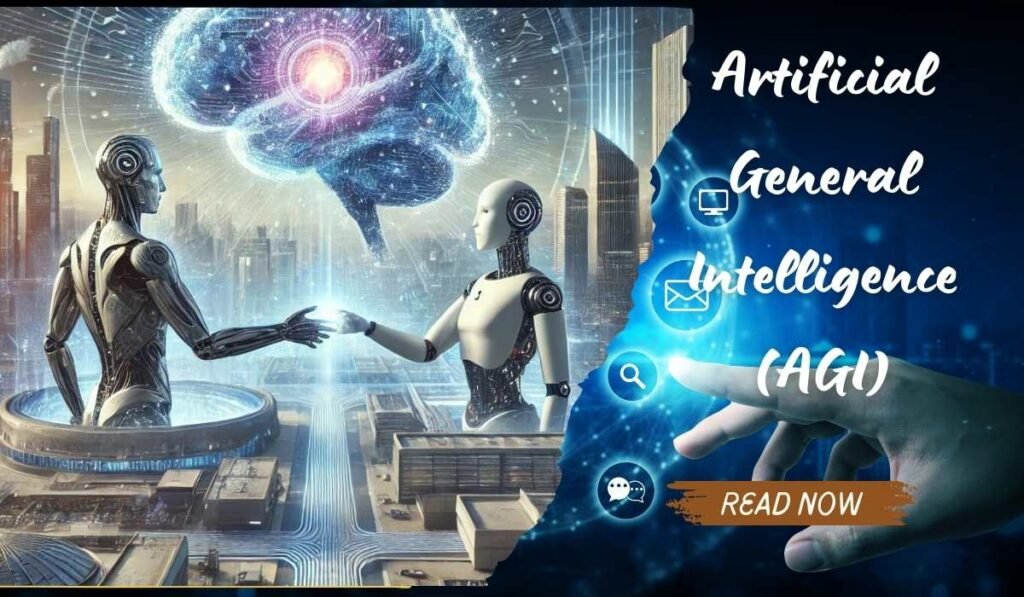Imagine a world where resources are abundant, robots think and feel like humans, and clean energy powers our civilization. This isn’t science fiction—it’s the rapidly approaching future shaped by groundbreaking technologies. From space exploration to quantum computing, these innovations are set to transform every aspect of our lives. Let’s dive into the exciting realm of future technologies and explore how they’re revolutionizing our world.
Asteroid Mining: Tapping into Space’s Vast Resources





The concept of asteroid mining is opening up new frontiers in resource acquisition. By extracting valuable materials from asteroids, we can ensure a sustainable future for humanity while propelling space exploration to new heights. Future technologies in this field include:
- Advanced extraction methods for water, precious metals, and rare minerals
- Propulsion systems for spacecraft using mined resources
- Fueling systems for human settlements in space
The economic potential of asteroid mining is immense, offering unparalleled opportunities for growth and scientific discovery.
AI Humanoid Robots: Blurring the Lines Between Man and Machine
Enter Figure 02, a revolutionary AI humanoid robot that’s pushing the boundaries of artificial intelligence. This cutting-edge creation demonstrates how future technologies are rapidly advancing in the field of robotics:
- Advanced neural networks and machine learning algorithms
- Emotion recognition and response capabilities
- Adaptive learning from experiences and new situations
Figure 02 represents the dawn of a new era in human-robot collaboration, with potential applications in healthcare, education, and space exploration.
CRISPR: Rewriting the Code of Life
CRISPR gene editing technology is revolutionizing genetics by allowing precise DNA modifications. This powerful tool holds immense potential in various areas:
- Correcting genetic defects
- Treating diseases like sickle cell anemia and cystic fibrosis
- Enhancing certain human traits
While CRISPR raises ethical questions, particularly around its use in human embryos, it remains one of the most promising future technologies in medicine and agriculture.
Quantum Teleportation: Instantaneous Information Transfer
Although we’re not yet teleporting humans, quantum teleportation is making significant strides in the world of future technologies. This process uses quantum entanglement to transfer information instantaneously, regardless of distance. Potential applications include:
- Ultra-secure quantum networks
- Advanced quantum computers
- Revolutionary communication systems
While full teleportation remains a distant dream, quantum teleportation represents an exciting frontier in science.
James Webb Space Telescope: Unveiling the Cosmos
The James Webb Space Telescope (JWST) is set to rewrite our understanding of the universe. Launched in 2023, this marvel of future technologies offers unprecedented capabilities:
- Innovative segmented primary mirror
- State-of-the-art infrared vision
- Ability to study the formation of the first stars and galaxies
JWST will reveal the cosmos in ways never seen before, from the swirling clouds of the Orion nebula to the majestic spiral arms of Andromeda.
Graphene: The Material of the Future
Nanography’s graphene is accelerating innovation across industries. This remarkable material boasts incredible properties:
- 200 times stronger than steel
- Ultralight and ultraconductive
- Versatile applications in energy storage, composites, and electronics
Future technologies utilizing graphene could lead to ultra-fast charging batteries, lightning-quick electronics, and super-speedy composites for aerospace and automotive industries.
Microelectronics: Tiny Devices, Massive Impact
Microelectronics are the backbone of modern technology, powering everything from smartphones to spacecraft. Advancements in this field are driving future technologies such as:
- Artificial Intelligence
- Internet of Things (IoT)
- Quantum computing
These tiny devices are making a big impact, enabling autonomous vehicles, advancing medical research, and shaping the future of humanity.
Kaleidos: Portable Energy Revolution
Radiant’s Kaleidos is a portable microreactor that’s changing the game in energy production. This innovative technology offers:
- On-demand energy production
- Compact and lightweight design
- Applications in remote locations, emergency response, and space exploration
Kaleidos represents a key future technology in unlocking sustainable energy solutions and powering critical infrastructure in challenging environments.
Microsoft Mesh: Redefining Remote Collaboration
Microsoft Mesh is transforming how we connect and collaborate by blending the physical and digital worlds. This mixed reality platform offers:
- Lifelike holograms for immersive interactions
- Holoportation for realistic remote presence
- Seamless integration with various devices and Microsoft Teams
As a groundbreaking future technology, Microsoft Mesh is poised to redefine remote work and collaboration.
Quantum Internet: The Next Leap in Communication
The quantum internet promises to revolutionize communication by harnessing quantum mechanics principles. Key features include:
- Unprecedented speed and security
- Use of qubits for exponentially faster data transmission
- Virtually unhackable security through quantum entanglement
This future technology could lead to significant advancements in cryptography and complex problem-solving.
Unitree Quadruped Robot: Versatile Robotic Platform
The Unitree Quadruped Robot represents a leap forward in robotic mobility and intelligence. Its capabilities include:
- Advanced AI for autonomous task performance
- Agile navigation of challenging terrains
- Modular design for customization with sensors and equipment
This versatile future technology has applications in industrial inspections, search and rescue missions, and education.
Nuclear Fusion: The Ultimate Clean Energy Source
Nuclear fusion, the process that powers the Sun, holds the promise of abundant, sustainable, and clean energy. Advancements in this field include:
- Zero greenhouse gas emissions
- Potential for limitless energy production
- Applications in space travel and industrial transformation
As one of the most promising future technologies, nuclear fusion could revolutionize energy production and combat climate change.
Nanobots: Microscopic Marvels
Nanorobots, or nanobots, are tiny machines designed to operate at the molecular level. These microscopic future technologies offer groundbreaking possibilities:
- Precise cellular repair
- Targeted drug delivery
- Molecular-scale manufacturing
Although still in development, nanobots have the potential to transform medicine and manufacturing.
Starlink: Global Internet Revolution
SpaceX’s Starlink satellite internet is revolutionizing global connectivity. This innovative system offers:
- High-speed internet access to remote and underserved areas
- Low-latency connections through a massive constellation of satellites
- Potential to bridge the global digital divide
Starlink represents a significant leap forward in future technologies for global communication and internet access.
Ectolife: Artificial Womb Technology
The concept of Ectolife artificial wombs could revolutionize reproductive health. This visionary future technology aims to:
- Enable human embryo development outside the mother’s body
- Reduce risks associated with traditional pregnancy and childbirth
- Advance care for premature babies
While still in the conceptual phase, Ectolife raises important ethical questions while offering potential solutions for reproductive challenges.
Embracing the Future
As we’ve explored, future technologies are set to transform every aspect of our lives, from how we communicate and work to how we explore space and generate energy. While some of these innovations are already making an impact, others are on the horizon, promising to shape a world that was once the stuff of science fiction.
As we stand on the brink of these technological revolutions, it’s crucial to consider both the immense potential and the ethical implications of these advancements. By embracing these future technologies responsibly, we can create a more sustainable, connected, and innovative world for generations to come.
Asteroid mining involves extracting valuable materials from asteroids, such as water, precious metals, and rare minerals. It is important because it offers a sustainable resource acquisition method, supporting space exploration and potentially providing economic growth.
AI humanoid robots, like Figure 02, utilize advanced neural networks and emotion recognition to blur the lines between man and machine. They can adapt and learn from experiences, making them valuable in fields such as healthcare, education, and space exploration.
CRISPR gene editing technology can correct genetic defects, treat diseases like sickle cell anemia and cystic fibrosis, and enhance certain human traits. However, it raises ethical questions, especially regarding its use in human embryos.
Quantum teleportation is a process that uses quantum entanglement to transfer information instantaneously, regardless of distance. It has potential applications in ultra-secure quantum networks, advanced quantum computers, and revolutionary communication systems.
Launched in 2023, the James Webb Space Telescope features an innovative segmented primary mirror and state-of-the-art infrared vision. It allows scientists to study the formation of the first stars and galaxies, unveiling the cosmos in unprecedented detail.
Graphene is 200 times stronger than steel, ultralight, and ultraconductive. These properties make it highly versatile for applications in energy storage, electronics, and composites, potentially leading to innovations in batteries and aerospace technology.
Microelectronics are critical in powering devices from smartphones to spacecraft. They enable advancements in artificial intelligence, the Internet of Things (IoT), and quantum computing, significantly impacting autonomous vehicles and medical research.
Kaleidos is a portable microreactor that allows for on-demand energy production. Its compact design makes it suitable for applications in remote locations, emergency responses, and space exploration, representing a key advancement in sustainable energy solutions.
Microsoft Mesh is a mixed reality platform that creates lifelike holograms for immersive interactions and allows for realistic remote presence through Holoportation. It integrates seamlessly with various devices, transforming remote work and collaboration.
Nuclear fusion, which powers the Sun, promises abundant, sustainable, and clean energy with zero greenhouse gas emissions. It has the potential for limitless energy production and applications in space travel and industrial transformation.










